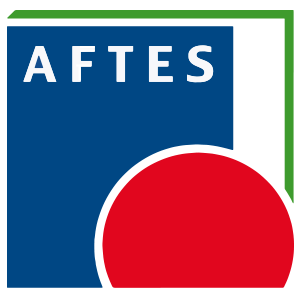
A new decree on accidents at work and compulsory signs on construction sites
30 June 2023 Off By Marie-Christine MICHELA new decree makes it compulsory for employers to report all fatal work accidents to the Labour Inspectorate, and imposes a criminal penalty if they fail to do so. It also introduces the possibility of dematerialising worksite signage in the form of a QR code in the case of worksites for which planning permission has been granted. This decree comes into force on 12 June 2023.
New obligation to declare fatal accidents at work within 12 hours of the employee's death
In the past, in the event of a fatal accident at work, an investigation was carried out by the Labour Inspectorate to ascertain whether or not a failure to apply the regulations was the cause of the accident, but there was no legal requirement to notify the Labour Inspectorate of the occurrence of such an accident. Decree no. 2023- 452 of 9 June 2023 (OJ of 11 June 2023), which came into force on 12 June 2023, now requires employers faced with a fatal workplace accident to inform the Labour Inspectorate within 12 hours of the employee’s death, and introduces a criminal penalty for non-compliance with this obligation (R 4121-5 of the Labour Code).
This obligation is part of the Ministry’s policy, in addition to the 4th Occupational Health Plan – 2022-2025 (PRST 4) which aims, in particular, to improve knowledge in order to better target actions against serious or fatal accidents. Olivier Dussopt, the French Minister for Employment, pointed out that this decree would help to ensure the effectiveness of accident investigations by limiting “the time taken to establish the facts, which is likely to be detrimental to establishing the truth, given the risk of evidence being altered”.
In most cases, the Labour Inspectorate was notified by the police, gendarmerie or fire brigade. There was “a gap to be filled”, explained Catherine Pernette, head of the labour policy department at Drieets* Île-de-France. The Ministry of Labour adds that “the quality of the procedures implemented” depends on the findings made on site “within a short timeframe”.
What needs to be done?
In practice, following a fatal accident, the employer must inform:
- The Labour Inspectorate control officer responsible for the place where the accident occurred immediately and at the latest within twelve hours of the worker's death.
- The CRAM and CARSAT inspection officers within 48 hours of the accident (CSS, art. R. 441-3) in order to determine whether the death was caused by work.
- Regional representatives of the OPPBTP within 48 hours of the accident, to determine the causes, nature and circumstances of the accident, in order to ensure that such an accident does not happen again.
It is also advisable to inform the gendarmerie or police and the occupational physician.
This new twelve-hour period is counted from the date of the worker’s death. If the employer was unable to learn of the death due to special circumstances (e.g. death in hospital, commuting accident), the time limit runs from the moment the employer learns of the death.
This information should be sent by any means that “confers a certain date of dispatch”, for example by registered letter with acknowledgement of receipt.
This information must include the following details:
- The name or company name as well as the postal and electronic addresses and telephone numbers of the company or establishment employing the worker at the time of the accident.
- Where applicable, the name or company name as well as the postal and electronic addresses and telephone numbers of the company or establishment in which the accident occurred if this is different from the employing company or establishment.
- The victim's surname, forenames and date of birth.
- The date, time, place and circumstances of the accident.
- The identity and contact details of any witnesses.
What happens if the declaration is not made within the required 12 hours?
If the employer fails to inform the relevant Labour Inspectorate inspectorate that a fatal accident has occurred, a 5th class fine (up to €1,500 for an individual and €7,500 for a legal entity) may be imposed (Art. R4741-2 of the Labour Code). This is the most serious offence under the Criminal Code and may be increased in the event of a repeat offence (art. 132-11 and 132-15 of the Criminal Code).
Digital signage of building sites subject to the issue of a building permit
The decree of 9 June also provides for the possibility, from 12 June 2023, of using an alternative digital system to the physical worksite sign for worksites for which a building permit has been issued. The aim of this provision is to reinforce the obligation for transparency and visibility on the part of the companies involved, thereby contributing to the effectiveness of the means of combating undeclared work, which is itself a factor in the occurrence of accidents in the workplace. The Minister for Employment has stated that his policy aims to “develop all means of combating illegal employment”.
When a contractor is working on a site for which planning permission has been granted, he must display his name, company name and address on the site for as long as the planning permission has been displayed.
Until now, this information had to be displayed on a notice board that could be read from the public highway.
The decree of 9 June now authorises this site information to be displayed electronically in the form of a “two-dimensional code”, also known as a QR code. This code must be visible from the public highway and readable free of charge by anyone who needs to consult it (Art. R.8221-1 of the Labour Code).
This solution gives all parties, including the inspection services, real-time access to information relating to worksites (name, contact details, SIRET number of the companies involved) either by connecting to a free platform, or on the worksite by scanning the QR code.
So how do you go about it?
In practice, to generate the QR code, contractors will need to fill in the information required by the regulations (name, company name or designation, address) via a shared, secure digital space, in real time. Once this information has been entered into the digital space, it will be made accessible to anyone with a smartphone passing on the public highway by scanning the QR code.
To know more




